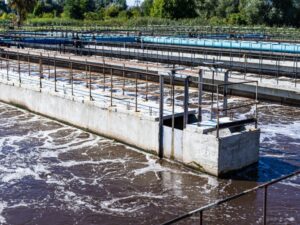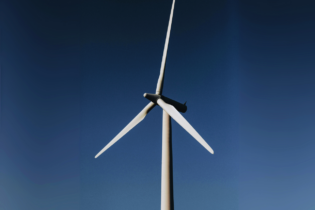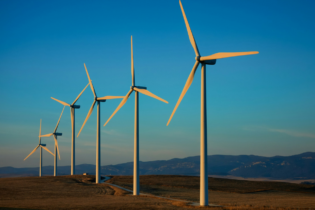The wastewater industry can respond to climate change by improving energy efficiency, reducing greenhouse gases and generating additional energy through biogas.
 By Hennie Pretorius, industry manager: Water & Wastewater, Endress+Hauser
In the 2022 Green Drop Report, proof of energy efficiency management must be provided by Specific Power Consumption (SPC), energy unit cost (R/kWh), and express energy treatment cost in (R/m3).
The 2022 Green Drop Report reported that that very few Water Services Authorities (WSAs) conducted a baseline energy audit or could account for their wastewater treatment plants’ CO2 footprint. The few WSAs that provided a baseline energy audit released concerning results.
The SPC values range from 0.002 to 1418 kWh/m3 – outliers were removed to keep approximately 80% of the original data set. The data indicates:
By Hennie Pretorius, industry manager: Water & Wastewater, Endress+Hauser
In the 2022 Green Drop Report, proof of energy efficiency management must be provided by Specific Power Consumption (SPC), energy unit cost (R/kWh), and express energy treatment cost in (R/m3).
The 2022 Green Drop Report reported that that very few Water Services Authorities (WSAs) conducted a baseline energy audit or could account for their wastewater treatment plants’ CO2 footprint. The few WSAs that provided a baseline energy audit released concerning results.
The SPC values range from 0.002 to 1418 kWh/m3 – outliers were removed to keep approximately 80% of the original data set. The data indicates:
- A marginal difference between the basic and advanced systems – 0.90 kWh/m3 and 0.94 kWh/m3
- The median values differ slightly – 0.76 kWh/m3 for advanced systems and 0.53 kWh/m3 for basic systems
- This is notably higher than the international standard of 0.177 for trickling filter and 0.412 for advanced activated sludge technologies
- The average SPC for advanced systems varies from 0.289 kWh/m3 to 2.37 kWh/m3 and for basic systems between 0.07 kWh/m3 to 2.94 kWh/m3
 The first step to improve a wastewater treatment plant’s efficiency, including energy efficiency, is to capacitate operations and maintenance staff and managers with adequate training relevant to plant and process efficiency. The second step is to measure, capture and monitor data in real time. Utilising this data will present the WSA with opportunities to reduce costs through process optimisation and improved energy efficiency, and beneficial use of sludge and other energy resources.
One of the important topics is to make the use of energy more transparent by calculating Key Performance Indicators (KPIs), highlighting overall energy consumption, and assisting operators to identify energy saving potential.
Analysing the performance and energy consumption of a wastewater treatment plant helps to:
The first step to improve a wastewater treatment plant’s efficiency, including energy efficiency, is to capacitate operations and maintenance staff and managers with adequate training relevant to plant and process efficiency. The second step is to measure, capture and monitor data in real time. Utilising this data will present the WSA with opportunities to reduce costs through process optimisation and improved energy efficiency, and beneficial use of sludge and other energy resources.
One of the important topics is to make the use of energy more transparent by calculating Key Performance Indicators (KPIs), highlighting overall energy consumption, and assisting operators to identify energy saving potential.
Analysing the performance and energy consumption of a wastewater treatment plant helps to:
- Detect saving potential through constant monitoring of energy relevant areas of the treatment plant.
- Benchmark efficiency of treatment plants with similar plants to create transparency and define further activities.
- Track energy usage and determine the cost of wastewater treatment.
- Evaluate equipment, system, and control performance to find the ideal point of operation, avoid downtimes and ensure plant safety.
- Quantify benefits of system modifications and improvements.
- Verify predicted performance.
- Improve KPA in Green Drop Audits.
- the inlet flow
- COD (Chemical Oxygen Demand) at inflow (lab result input)
- total plant power consumption from electricity meter
 Depending on the type of aeration in the bioreactors, the power consumption of the aerators/blowers can be up to 50% of the plants power consumption. Typical causes for inefficiencies of blowers relate to pressure loss through leaks in piping, blockages in air piping or blocked aeration elements. Through monitoring pressure, air flow and power consumption measurements, it will indicate where the optimum operational point of the blowers are and when maintenance is required on the aeration elements.
To calculate this KPI, it is required to measure and monitor the blower air flow, air pressure, COD value, inflow into aeration basin and blower power consumption. By using in-line dissolved oxygen and Ammonia measurements we can determine the optimum air required for nitrification to take place which supports energy efficiency gains within the process.
Electricity generation
Increase of electricity production is often easier to achieve and less expensive than electricity savings measures. Key process parameters such as gas to COD ratio or electrical and thermal efficiency of Combined Heat and Power plants (CHP) are essential parameters for optimisation and verification of electricity production or quantifying effects of co-fermentation.
In this context, it must be pointed out that it is necessary to focus not only on single processes but to monitor the complete system to discover related effects of interactions between processes. For a CHP plant to optimally produce heat and electricity, the CHP efficiency and sludge gas production efficiency must be analysed and optimised.
The following measurements would be required to optimise CHP and sludge gas production efficiency:
Depending on the type of aeration in the bioreactors, the power consumption of the aerators/blowers can be up to 50% of the plants power consumption. Typical causes for inefficiencies of blowers relate to pressure loss through leaks in piping, blockages in air piping or blocked aeration elements. Through monitoring pressure, air flow and power consumption measurements, it will indicate where the optimum operational point of the blowers are and when maintenance is required on the aeration elements.
To calculate this KPI, it is required to measure and monitor the blower air flow, air pressure, COD value, inflow into aeration basin and blower power consumption. By using in-line dissolved oxygen and Ammonia measurements we can determine the optimum air required for nitrification to take place which supports energy efficiency gains within the process.
Electricity generation
Increase of electricity production is often easier to achieve and less expensive than electricity savings measures. Key process parameters such as gas to COD ratio or electrical and thermal efficiency of Combined Heat and Power plants (CHP) are essential parameters for optimisation and verification of electricity production or quantifying effects of co-fermentation.
In this context, it must be pointed out that it is necessary to focus not only on single processes but to monitor the complete system to discover related effects of interactions between processes. For a CHP plant to optimally produce heat and electricity, the CHP efficiency and sludge gas production efficiency must be analysed and optimised.
The following measurements would be required to optimise CHP and sludge gas production efficiency:
- Sludge flow into digesters
- COD value
- Biogas volume flow
- Biogas pressure
- Biogas temperature
- Power production
- Total power consumption.








